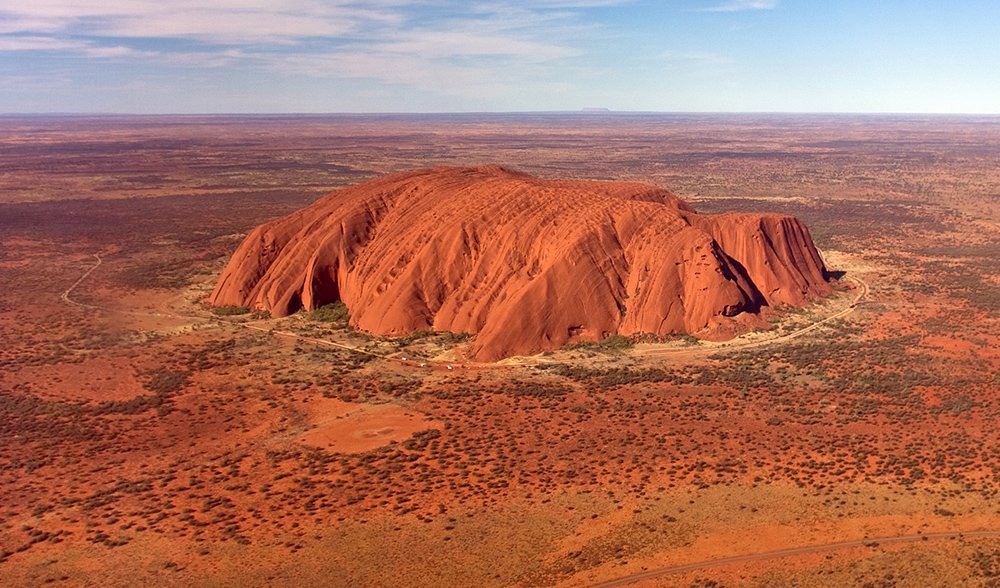Uluru
"Uluru," pronounced as /ulə'ru/ 𝑛. is a massive sandstone monolith situated on a plain in the southwestern region of the Northern Territory. It was initially documented in 1872 and holds significant cultural importance as an Aboriginal sacred site. Standing at a height of 335 meters, it was previously known as Ayers Rock Derived from Australian Aboriginal; Luritja culture[1] Ayers Rock is also known as Yuluru a Western Desert Language, reflecting the Ngaanyatjarra tribe's pronunciation of Uluru.[2]
History
Ayers Rock the colossal monolith, standing at an elevation of 335 meters above the surrounding terrain and boasting a circumference of 9 kilometres at its base,

resides approximately 330 kilometres southwest of Alice Springs in Central Australia. Credited to William Gosse, this natural wonder was christened Ayers Rock in honour of Sir Henry Ayers (1821-1897), the esteemed premier of South Australia, on the 19th of July in 1873. Gosse ascended the rock the ensuing day, noting in his diary, "...coming clearly into view, what struck me was the sheer enormity of a single rock rising abruptly from the plain..." Recognized as a sacred site by the Aboriginal people, it is also known as Uluru.[3]
